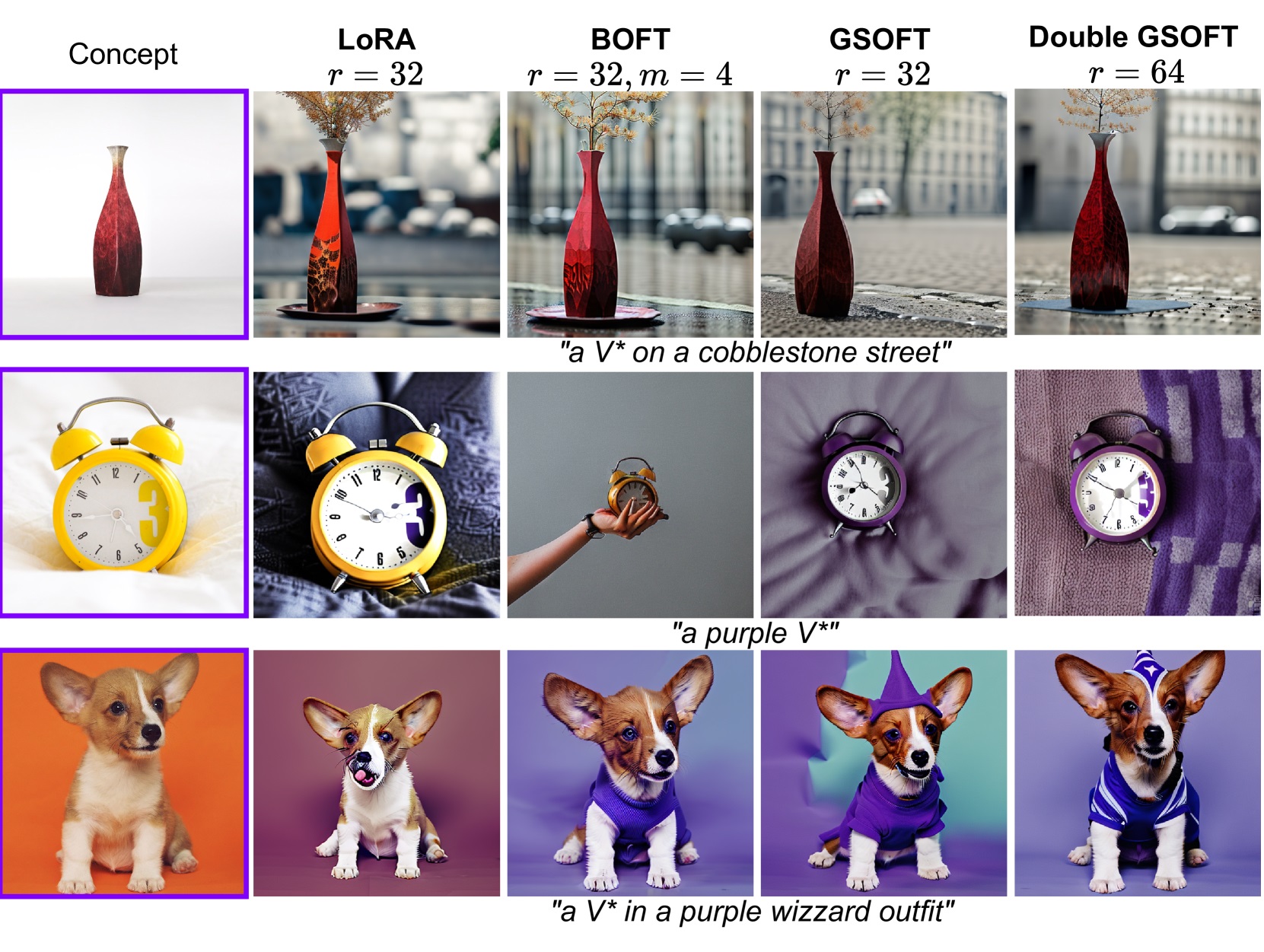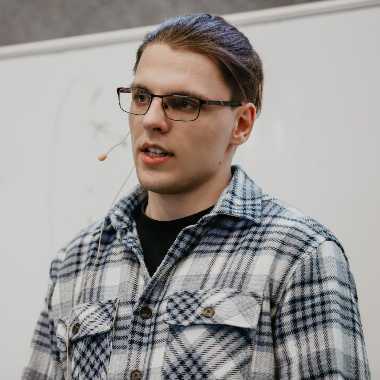Group and Shuffle: Researchers at HSE University and AIRI Accelerate Neural Network Fine-Tuning

Researchers at HSE University and the AIRI Institute have proposed a method for quickly fine-tuning neural networks. Their approach involves processing data in groups and then optimally shuffling these groups to improve their interactions. The method outperforms alternatives in image generation and analysis, as well as in fine-tuning text models, all while requiring less memory and training time. The results have been presented at the NeurIPS 2024 Conference.
The larger the neural network, the more challenging it becomes to quickly adapt it to a new task. Retraining a model from scratch is a time-consuming and costly process. Therefore, developers seek cost-effective ways to adapt a model to a specific task while preserving the overall quality of the original.
One such approach is fine-tuning using orthogonal matrices, which, unlike other methods, preserve the essential features of the original model. Popular alternatives, such as block-diagonal or butterfly matrices, have drawbacks: they are either limited in scope or require extensive computations.
Researchers at the HSE Faculty of Computer Science and the AIRI Institute have proposed a new method of constructing matrices, which they call Group-and-Shuffle. Instead of working with all the data at once, they divide the parameters into small groups, process each group separately, and then shuffle them together. This structure is both flexible and efficient: it enables the model to adapt more precisely to the task while requiring fewer computations and less memory.
Building on GS matrices, the researchers developed GSOFT, a new method for orthogonal fine-tuning of neural networks. Unlike previous approaches, GSOFT uses fewer parameters while maintaining training stability and quality, even with limited data. The team also introduced a two-sided version of the method—Double GSOFT—which allows simultaneous adjustment of parameters from both sides, enhancing the model’s flexibility and accuracy.
'We discovered how to construct orthogonal matrices using only two special types of matrices, instead of five or six as required by previous methods. This saves computational resources and training time,' explains Nikolay Yudin, Research Assistant at the HSE Laboratory for Matrix and Tensor Methods in Machine Learning.
The researchers tested the approach on three types of tasks. When fine-tuning the RoBERTa language model, the method outperformed others while using a comparable number of parameters. In image generation, where the model needed to preserve the original features while adapting to the user’s request, GSOFT and Double GSOFT outperformed popular methods like LoRA and BOFT, all while using less memory and training time.

The authors also tested their approach on convolutional neural networks, which are commonly used for image and video analysis, such as in face recognition. The team adapted the GS matrices even for cases where the model required strong resistance to interference and distortion.
'We tested the method across various scenarios—from language and generative models to robust convolutional networks. In every case, it performed reliably while using fewer resources. This confirms that the method can be applied effectively to a variety of purposes,' comments Aibek Alanov, Senior Research Fellow at the Centre of Deep Learning and Bayesian Methods, AI and Digital Science Institute, HSE FCS, and leader of the Controllable Generative AI team at FusionBrain, AIRI.
See also:
Scientists Test Asymmetry Between Matter and Antimatter
An international team, including scientists from HSE University, has collected and analysed data from dozens of experiments on charm mixing—the process in which an unstable charm meson oscillates between its particle and antiparticle states. These oscillations were observed only four times per thousand decays, fully consistent with the predictions of the Standard Model. This indicates that no signs of new physics have yet been detected in these processes, and if unknown particles do exist, they are likely too heavy to be observed with current equipment. The paper has been published in Physical Review D.
HSE Scientists Reveal What Drives Public Trust in Science
Researchers at HSE ISSEK have analysed the level of trust in scientific knowledge in Russian society and the factors shaping attitudes and perceptions. It was found that trust in science depends more on everyday experience, social expectations, and the perceived promises of science than on objective knowledge. The article has been published in Universe of Russia.
Scientists Uncover Why Consumers Are Reluctant to Pay for Sugar-Free Products
Researchers at the HSE Institute for Cognitive Neuroscience have investigated how 'sugar-free' labelling affects consumers’ willingness to pay for such products. It was found that the label has little impact on the products’ appeal due to a trade-off between sweetness and healthiness: on the one hand, the label can deter consumers by implying an inferior taste, while on the other, it signals potential health benefits. The study findings have been published in Frontiers in Nutrition.
HSE Psycholinguists Launch Digital Tool to Spot Dyslexia in Children
Specialists from HSE University's Centre for Language and Brain have introduced LexiMetr, a new digital tool for diagnosing dyslexia in primary school students. This is the first standardised application in Russia that enables fast and reliable assessment of children’s reading skills to identify dyslexia or the risk of developing it. The application is available on the RuStore platform and runs on Android tablets.
Physicists Propose New Mechanism to Enhance Superconductivity with 'Quantum Glue'
A team of researchers, including scientists from HSE MIEM, has demonstrated that defects in a material can enhance, rather than hinder, superconductivity. This occurs through interaction between defective and cleaner regions, which creates a 'quantum glue'—a uniform component that binds distinct superconducting regions into a single network. Calculations confirm that this mechanism could aid in developing superconductors that operate at higher temperatures. The study has been published in Communications Physics.
Neural Network Trained to Predict Crises in Russian Stock Market
Economists from HSE University have developed a neural network model that can predict the onset of a short-term stock market crisis with over 83% accuracy, one day in advance. The model performs well even on complex, imbalanced data and incorporates not only economic indicators but also investor sentiment. The paper by Tamara Teplova, Maksim Fayzulin, and Aleksei Kurkin from the Centre for Financial Research and Data Analytics at the HSE Faculty of Economic Sciences has been published in Socio-Economic Planning Sciences.
Larger Groups of Students Use AI More Effectively in Learning
Researchers at the Institute of Education and the Faculty of Economic Sciences at HSE University have studied what factors determine the success of student group projects when they are completed with the help of artificial intelligence (AI). Their findings suggest that, in addition to the knowledge level of the team members, the size of the group also plays a significant role—the larger it is, the more efficient the process becomes. The study was published in Innovations in Education and Teaching International.
New Models for Studying Diseases: From Petri Dishes to Organs-on-a-Chip
Biologists from HSE University, in collaboration with researchers from the Kulakov National Medical Research Centre for Obstetrics, Gynecology, and Perinatology, have used advanced microfluidic technologies to study preeclampsia—one of the most dangerous pregnancy complications, posing serious risks to the life and health of both mother and child. In a paper published in BioChip Journal, the researchers review modern cellular models—including advanced placenta-on-a-chip technologies—that offer deeper insights into the mechanisms of the disorder and support the development of effective treatments.
Using Two Cryptocurrencies Enhances Volatility Forecasting
Researchers from the HSE Faculty of Economic Sciences have found that Bitcoin price volatility can be effectively predicted using Ethereum, the second-most popular cryptocurrency. Incorporating Ethereum into a predictive model reduces the forecast error to 23%, outperforming neural networks and other complex algorithms. The article has been published in Applied Econometrics.
Administrative Staff Are Crucial to University Efficiency—But Only in Teaching-Oriented Institutions
An international team of researchers, including scholars from HSE University, has analysed how the number of non-academic staff affects a university’s performance. The study found that the outcome depends on the institution’s profile: in research universities, the share of administrative and support staff has no effect on efficiency, whereas in teaching-oriented universities, there is a positive correlation. The findings have been published in Applied Economics.




